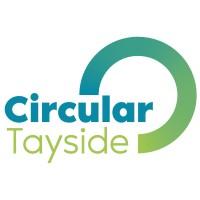
Welcome to issue 11 of Clarity About Circularity, a blog series by MDG Group. So far, we have discussed our sustainability journey, our role with Circular Tayside, green energy, and the Triple A Plan detailing your Accountability, Awareness and Action as a business aiming to become more circular and environmentally friendly. If you have missed any of these please get in touch using the contact details below and we can send you a copy! This week we look at carbon offsetting and consider how effective it really is.
Of course, one of the most effective ways to improve your carbon footprint is by using green energy, however as more and more businesses are choosing this over fossil fuels and conventional energy sources, the National Grid is finding it increasingly difficult to support demand. Typically, green electricity is much easier to generate than green gas. Electricity generation uses different natural sources such as sunlight, wind, rain and tides amongst other methods, but green gas is more difficult, relying on organic matter such as food and animal waste being turned into biomethane through anaerobic digestion. As a result, many green gas products are offered as part renewable, part carbon offsets.
A carbon neutral business is one who’s carbon reductions are equivalent to the total carbon footprint of their activities. Carbon offsets can be bought, sold, or traded as part of a carbon market and there are many different ways to go about it, ranging from smaller, easier methods such as tree planting, or partnering with an organisation to do so on your behalf, to larger scale projects such as building wind farms. Other effective practices include energy-efficiency improvements such as increasing insulation in buildings to reduce heat loss, or using more efficient or electric vehicles, which we discussed in greater depth in last weeks blog.
It is important to note that, while unquestionably a positive practice, carbon offsetting alone will not reduce harmful greenhouse gas emissions unless your business is actively trying to reduce consumption to an acceptable level – in short, offsetting is no substitute for 100% renewable energy.
So, how can you reduce consumption? Blog 8 looked at LED lighting as an effective method, while blog 9 highlighted the importance of switching off lights and electrical appliances when not in use. Additionally, using energy monitoring systems can help you to understand how efficiently you are using energy and pinpoint specific times or operations that may need to be altered in order to reduce unnecessary consumption, improving your carbon footprint and saving money in the process. At MDG Group, we are exploring the use of energy monitoring systems more so if you have any questions around this or offsetting generally, please get in touch!
Written by: Sam Grace & Christian Williams
christian.williams@mdggroup.co.uk

Circular Tayside
Circular Tayside is delivered by Zero Waste Scotland, Dundee and Angus Chamber of Commerce and Perthshire Chamber of Commerce. Circular Tayside is an initiative that: Raises awareness of the circular economy, the role the local businesses have to play in it, and how they will benefit. Facilitates collaboration amongst the local business community to enable our circular economy to develop. Supports individual businesses as they begin to identify and implement new and innovative approaches to businesses that support a transition to a circular economy Brings together a group of Circular Tayside Ambassadors who will be leaders in their sectors and champions of the circular economy.

Here's The Plan Ltd
At Here's The Plan, we help businesses to optimise utility & telecoms costs, understand & comply with regulations, and plan for Net-Zero by becoming more sustainable!






























